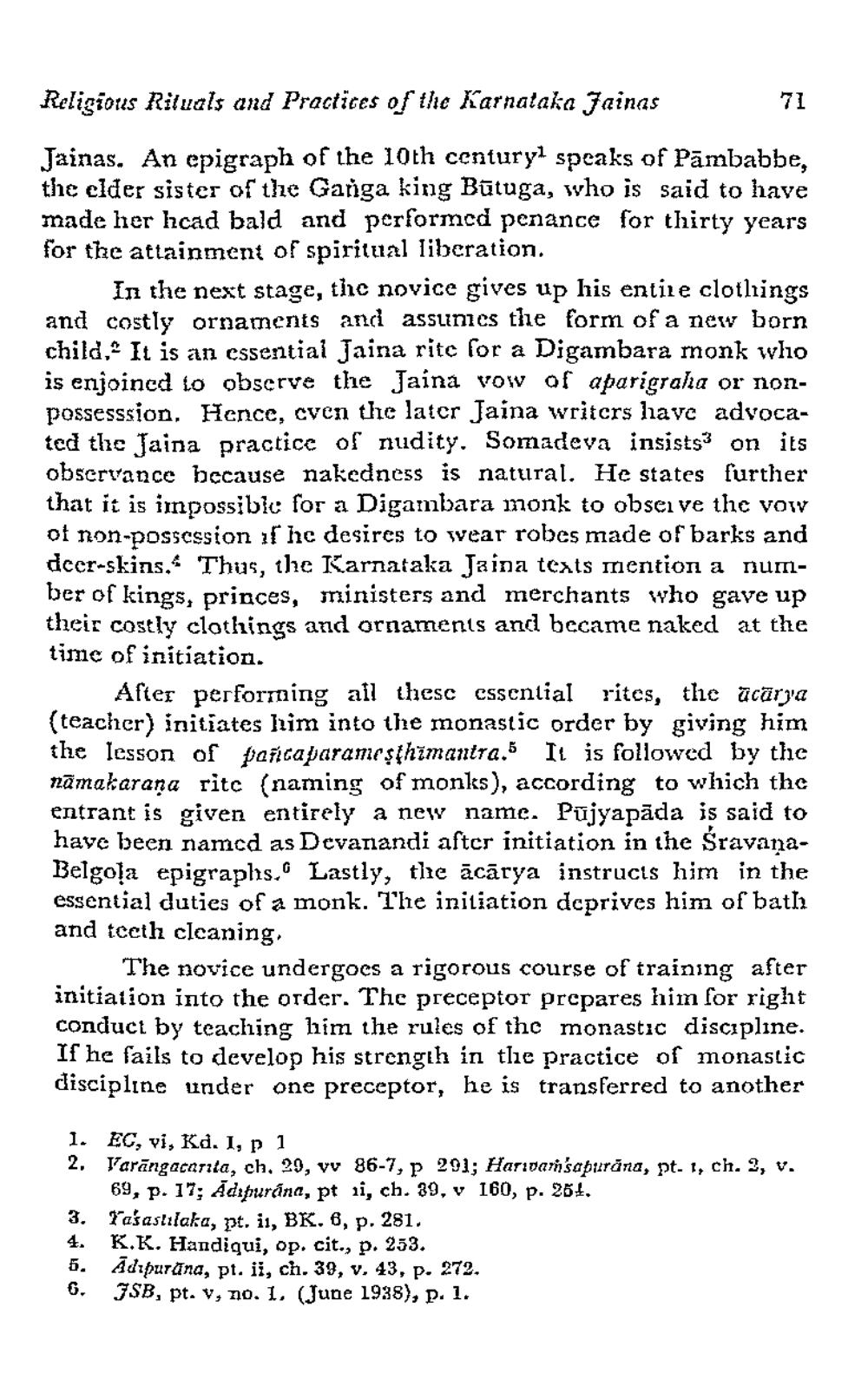________________
Religious Rituals and Practices of the Karnataka Jainas 71 Jainas. An epigraph of the 10th centuryl speaks of Pambabbe, the elder sister of the Ganga king Būtuga, who is said to have made her hcad bald and performed penance for thirty years for the attainment of spiritual libcration.
In the next stage, the novice gives up his entire clothings and costly ornaments and assunics the form of a new born child,” It is an essential Jaina rite for a Digambara monk who is enjoined to observe the Jaina vow of aparigrala or nonpossesssion. Hence, cven the latcr Jaina writers have advocated the Jaina practice of nudity. Somadeva insists3 on its observance because nakedness is natural. He states further that it is inpossible for a Digambara monk to obseive the vow of non-possession as he desires to wear robes made of barks and deer-skins. Thus, the Karnataka Jaina texts mention a number of kings, princes, ministers and merchants who gave up their costly clothings and ornaments and became naked at the time of initiation.
After performing all thesc csscntial rites, the acārya (teacher) initiates him into the monastic order by giving him the lesson of panicaparameşthīmantra. It is followed by the nāmakarana ritc (naming of monks), according to which the entrant is given entirely a new name. Pujyapāda is said to have been named as Devanandi after initiation in the SravanaBelgoļa epigraphs. Lastly, the ācārya instructs him in the essential duties of a monk. The initiation dcprives him of bath and tccth clcaning,
The novice undergoes a rigorous course of training after initiation into the order. The preceptor prepares him for right conduct by teaching him the rules of the monastic discipline. If he fails to develop his strength in the practice of monastic discipline under one preceptor, he is transferred to another
1. EC, vi, Kd. I, p 1 2. Varāngacarita, ch. 29, vv 86-7, p 291; Haridamsapurana, pt. 1, ch. 2, v.
69, p. 17; Adipurána, pt 1i, ch. 39, v 160, p. 251. 3. Kasastılaka, pt. ii, BK. 6, p. 281. 4. K.K. Handigui, op. cit., p. 253. 5. Adipurana, pt. ii, ch. 39, v. 43, p. 272. 6. FSB, pt. v, no. 1. (June 1938), p. 1.




